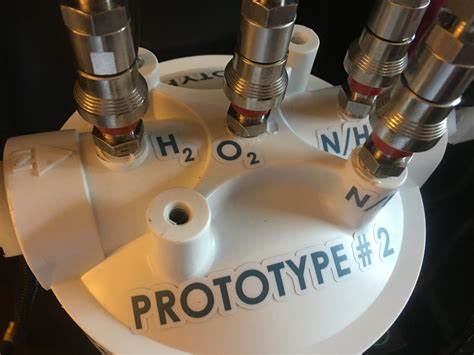Introduction
In the quest for sustainable energy solutions, hydrogen has emerged as a promising contender due to its high energy density and environmental friendliness. One key technology facilitating the widespread adoption of hydrogen is Proton Exchange Membrane (PEM) electrolyzers. These devices play a crucial role in the production of clean hydrogen by splitting water molecules into hydrogen and oxygen using electricity. Understanding the mechanisms behind PEM electrolyzers is essential for maximizing their efficiency and scalability.
The Basics of PEM Electrolyzers
PEM electrolyzers consist of an anode and a cathode separated by a proton exchange membrane. When an electric current is passed through the electrolyzer, water molecules (H2O) are split into hydrogen gas (H2) at the cathode and oxygen gas (O2) at the anode. The proton exchange membrane selectively allows protons to pass through while blocking the passage of gases, enabling the separation of hydrogen and oxygen.
Electrolysis Process
The electrolysis process involves Innovations in Hydrogen Production via PEM Electrolysis key steps. At the anode, water molecules undergo oxidation, releasing oxygen gas and positively charged hydrogen ions (protons). Simultaneously, electrons are liberated, creating an electric current. The protons migrate through the proton exchange membrane to the cathode, while the electrons travel through an external circuit, generating usable electricity. At the cathode, the protons combine with electrons to form hydrogen gas.
Challenges and Barriers
Despite their potential, PEM electrolyzers face several challenges that hinder their widespread adoption. One significant barrier is the high cost associated with proton exchange membranes, catalysts, and other materials required for efficient electrolysis. Additionally, PEM electrolyzers require pure water feedstock, which may not always be readily available and can further increase operational costs.
Improving Efficiency and Performance
Researchers are continuously exploring ways to enhance the efficiency and performance of PEM electrolyzers. One approach involves developing advanced catalysts to facilitate the electrochemical reactions at the electrodes. Platinum-based catalysts are commonly used due to their high activity, but efforts are underway to reduce reliance on precious metals by exploring alternative catalyst materials such as nickel, cobalt, and iron.
Moreover, optimizing the design and composition of proton exchange membranes can significantly improve electrolyzer performance. Advances in membrane technology aim to enhance proton conductivity, durability, and resistance to degradation, thereby increasing the longevity and efficiency of PEM electrolyzers.
Integration with Renewable Energy Sources
Integrating PEM electrolyzers with renewable energy sources such as solar and wind power can further enhance their sustainability and economic viability. Excess electricity generated from renewable sources can be utilized for water electrolysis, producing hydrogen during periods of peak renewable energy production. This concept, known as Power-to-Gas, enables energy storage and grid balancing while reducing reliance on fossil fuels.
Commercial Applications and Future Outlook
PEM electrolyzers hold immense potential for various commercial applications, including hydrogen production for fuel cell vehicles, industrial processes, and energy storage. As advancements in materials science and electrochemistry continue to drive innovation, the cost-effectiveness and scalability of PEM electrolyzers are expected to improve, making hydrogen a more accessible and sustainable energy option.
Conclusion
In the transition towards a greener and more sustainable future, PEM electrolyzers play a crucial role in enabling the widespread adoption of hydrogen as a clean energy carrier. By understanding the underlying mechanisms and addressing existing barriers, researchers and engineers can unlock the full potential of PEM electrolyzers, paving the way for a hydrogen-based economy with reduced carbon emissions and environmental impact. Through continued research, innovation, and collaboration, we can break down barriers and accelerate the transition towards a hydrogen-powered future.
Top of Form

